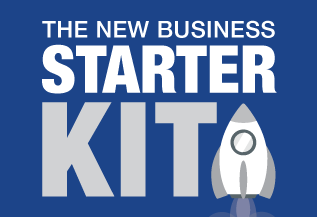ATO’s New Stapled Super Fund Rules – What Do Employers Need to Do?
Superannuation stapling came into effect from 1 November 2021 for new employees and employers will need to ensure their onboarding process complies with the ATO’s new ‘super stapling’ requirements.
What is ‘Super Stapling’?
‘Superannuation stapling’ was introduced as part of a package of reforms to the superannuation system announced in the 2020/21 Federal Budget. Prior to 1st November 2021, where an employee commenced employment with a new employer and did not choose a superannuation fund for their superannuation contributions to be paid into, their contributions were paid to a default product selected by the employer. As a result, a person who changes jobs and does not exercise choice of fund, may unintentionally end up with multiple accounts, thereby potentially eroding their retirement savings (the ATO estimates there are approximately 6 million unintended multiple superannuation accounts, incurring around $450 million in fees).
As from 1st November 2021, however, under the ‘super stapling’ reforms, where a person moves jobs their existing superannuation account will be linked or ‘stapled’ to them, meaning that their new employer must pay contributions into the ‘stapled fund’ unless the member chooses for their contributions to go to a different fund.
What Action Must Employers Take?
Employers must generally provide new employees with a superannuation Standard Choice Form within 28 days of commencing work. When a new employee commences on or after 1 November 2021, and does not choose a fund, the employer will need to check if the employee has an existing stapled fund. This is done by logging into ATO online services and accessing the ‘stapled super fund request service’. An employer will need to have lodged either a Single Touch Payroll event or a tax file number declaration for the employee to make the request. Once some basic information about the employee has been entered and the request is made, the ATO has advised that the result should be available within minutes.
if the employee does not exercise choice and has a stapled fund, the employer will be required to contribute to the employee’s stapled fund to meet their Superannuation Guarantee (SG) obligations. If the employer makes contributions to their default fund instead of the employee’s stapled fund (where they have one), the employer may be subject to the choice shortfall penalty.
The stapled fund rules only apply to new employees who commence work on or after 1 November 2021. No request for stapled super fund details is required for a new employee after that date where they have chosen a superannuation fund.
The ATO
website
has further information regarding stapled super funds.
As always, don't hesitate to contact us if you have any questions relating to stapled superannuation funds.
This article forms part of our Business Accelerator Magazine. Download the latest edition HERE or browse other articles from this edition below:
- Government Locks in Director ID Deadline
- The Key Ingredients for Business Success (Part 2)
- Why Do New Businesses Fail?
- Preparing to Sell Your Business
- Return to Top
Disclaimer: This newsletter contains general information only. No responsibility can be accepted for errors, omissions or possible misleading statements. No responsibility can be accepted for any action taken as a result of any information contained in these articles. It is not designed to be a substitute for professional advice and does not take into account your personal circumstances.














